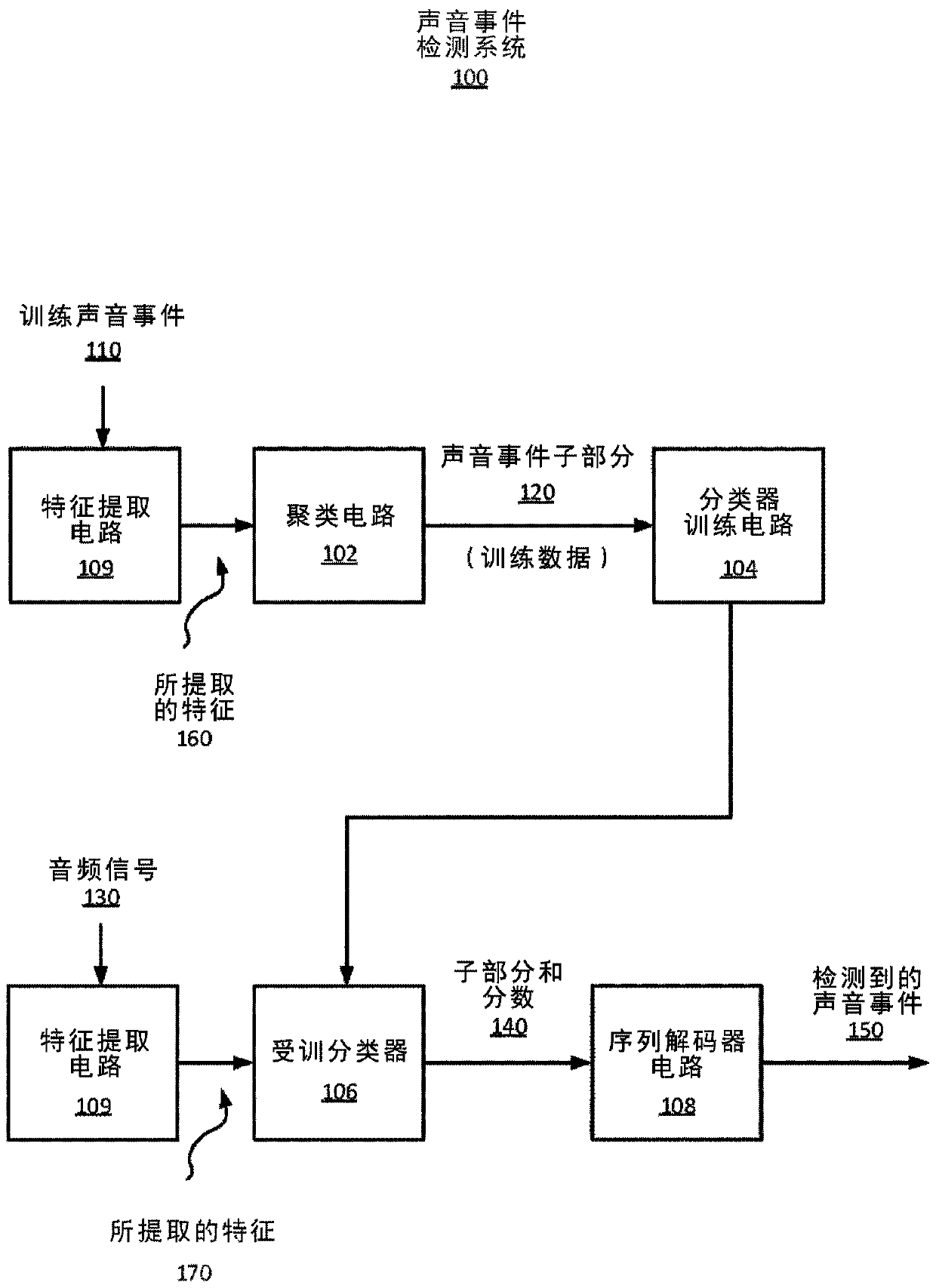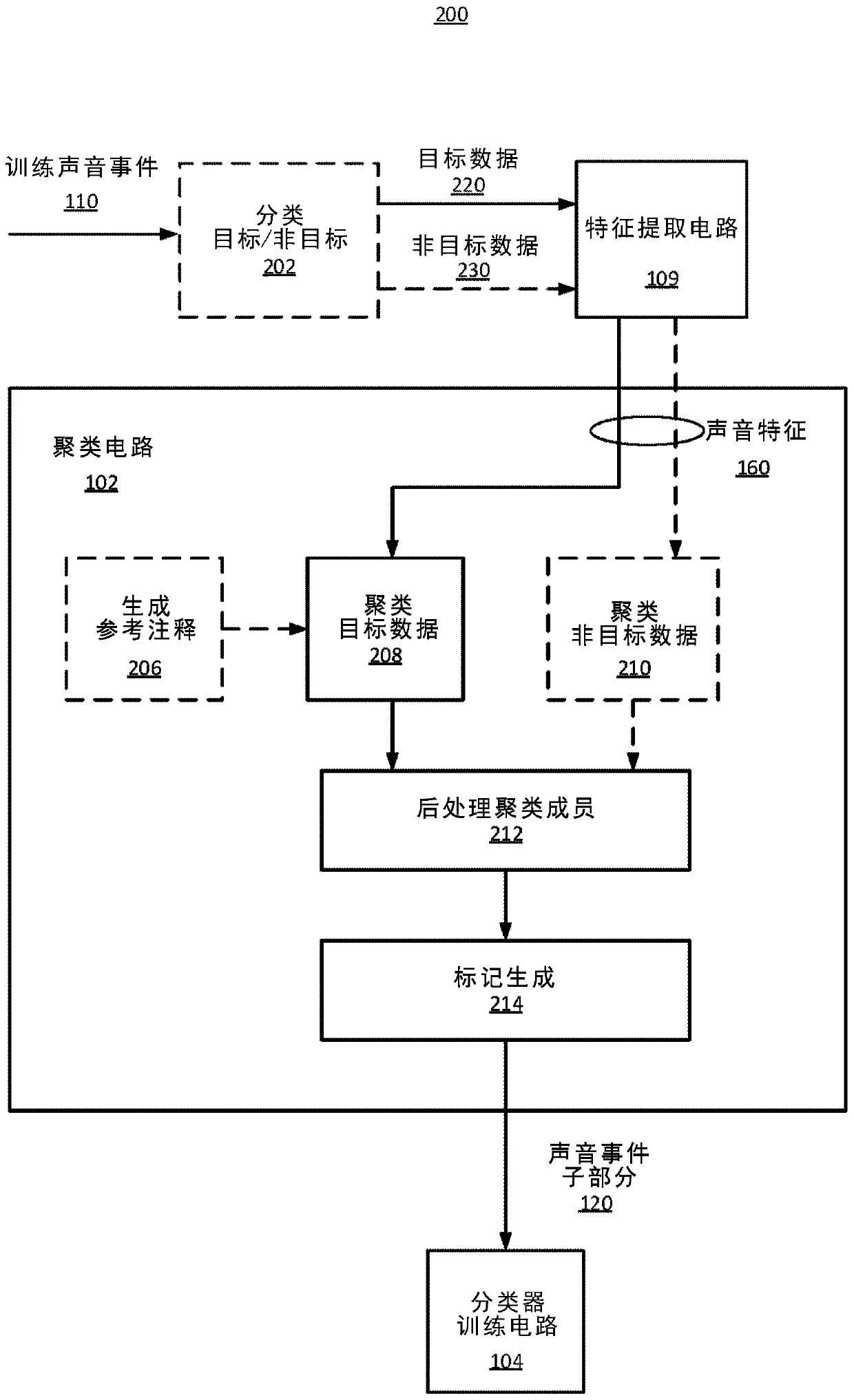Acoustic event detection based on modelling of sequence of event subparts
A sub-part, event technology, applied in the field of sound event detection, can solve problems such as expensive, inaccurate, time-consuming, etc.
- Summary
- Abstract
- Description
- Claims
- Application Information
AI Technical Summary
Problems solved by technology
Method used
Image
Examples
example 1
[0066] Example 1 is a processor-implemented method for detecting a sound event, the method comprising: extracting, by a processor-based system, one or more sound features from an audio signal; applying a trained classifier to the plurality of sound features to identify sound event sub-parts of the audio signal and generate scores associated with the sub-parts; and performing sequence decoding of the sound event sub-parts and associated scores by the processor-based system to Detect sound events.
example 2
[0067] Example 2 includes the subject matter of Example 1, wherein the sequence decoding is based on a temporal ordering of sound event sub-portions and a comparison of associated scores to a threshold score value.
example 3
[0068] Example 3 includes the subject matter of Examples 1 or 2, further comprising: training the classifier on the sub-portion of sound events generated by applying subspace clustering on the training data, the training data including the target sound event.
PUM
 Login to View More
Login to View More Abstract
Description
Claims
Application Information
 Login to View More
Login to View More - R&D
- Intellectual Property
- Life Sciences
- Materials
- Tech Scout
- Unparalleled Data Quality
- Higher Quality Content
- 60% Fewer Hallucinations
Browse by: Latest US Patents, China's latest patents, Technical Efficacy Thesaurus, Application Domain, Technology Topic, Popular Technical Reports.
© 2025 PatSnap. All rights reserved.Legal|Privacy policy|Modern Slavery Act Transparency Statement|Sitemap|About US| Contact US: help@patsnap.com



